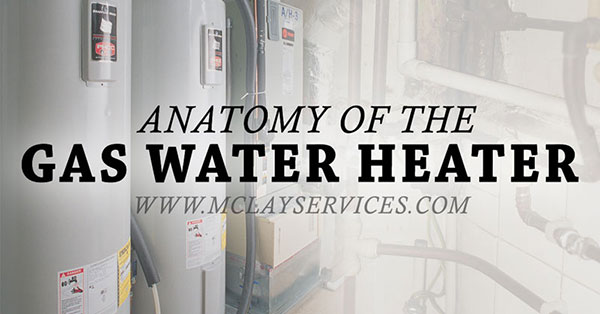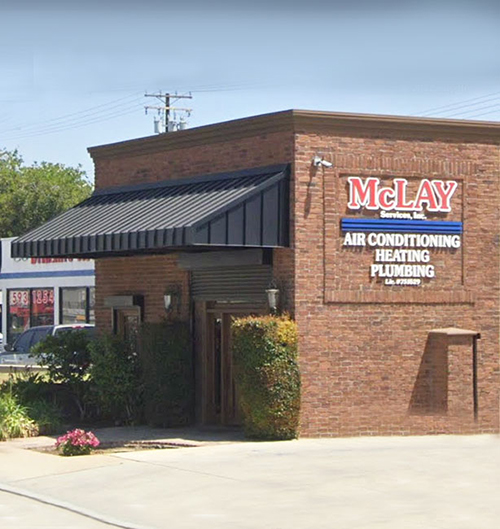Most homes have a gas hot water heater that sits in a closet designed for this purpose. Gas water heaters work by convection—cold water goes through a heating process inside the tank, and the hot water rises to the surface. In order to fully grasp how this process works, it can be helpful to understand the different components that make up your water heater.
1. Water Supply and Discharge
Your cold water is supplied through a cold water supply line, and the line is controlled through a shut off valve. In order to perform maintenance on your tank, it is important to shut off this valve. The hot water line takes the heated water and transfers it into your sinks, showers, tubs and appliances.
2. Tank Construction
Your water heater has a tank jacket that fits snugly around the tank. This jacket provides insulation, which reduces heat loss. Inside the tank is a dip tube, through which the cold water enters the tank. The cold water sits at the bottom of the tank, since it is denser than hot water. The burner then warms the water, and the heated water rises to the top. In glass-lined tanks, you will also find a metal rod, referred to as a sacrificial anode. This anode goes from the top of the tank deep into the bottom. Its purpose is to draw corrosion into itself and away from the metal tank.
3. Gas Burner Control and Assembly
Natural gas and propane comes through the gas pipe, which has its own shutoff valve. The gas burner control module acts as a type of thermostat for the water heater, and the gas line feeds into it. The ignition for the pilot light is also found at the control module. The pilot light and the gas burner need to work in tandem for the tank to operate effectively. The gas flame should be about half an inch high and have blue tips.
4. Gas Combustion Exhaust Flue
The gas combustion exhaust takes combusted gasses from the burner to the outside. It also acts as a heat exchanger to aid in heating the water in the storage tank.
5. Pressure Relief Valve
This safety feature is similar to a car’s radiator cap. The valve releases excess pressure or temperature that has built up inside the tank, in order to keep the tank within the safe limits of the design range. To make sure your valve is working correctly, lift the handle slightly and hot water should come out of the overflow pipe.
6. Tank Drain Valve
The tank drain valve prevents sediment from accumulating at the bottom of the tank and improves the water quality. You can flush the water tank using the tank drain valve by following the proper steps.
Follow us for additional information on heating, cooling and more.



